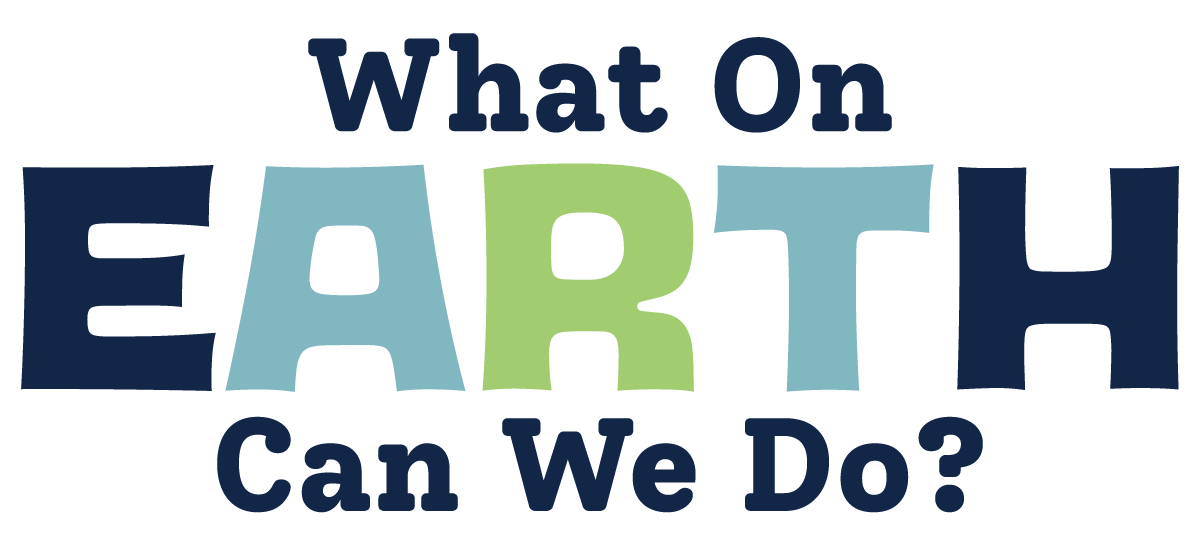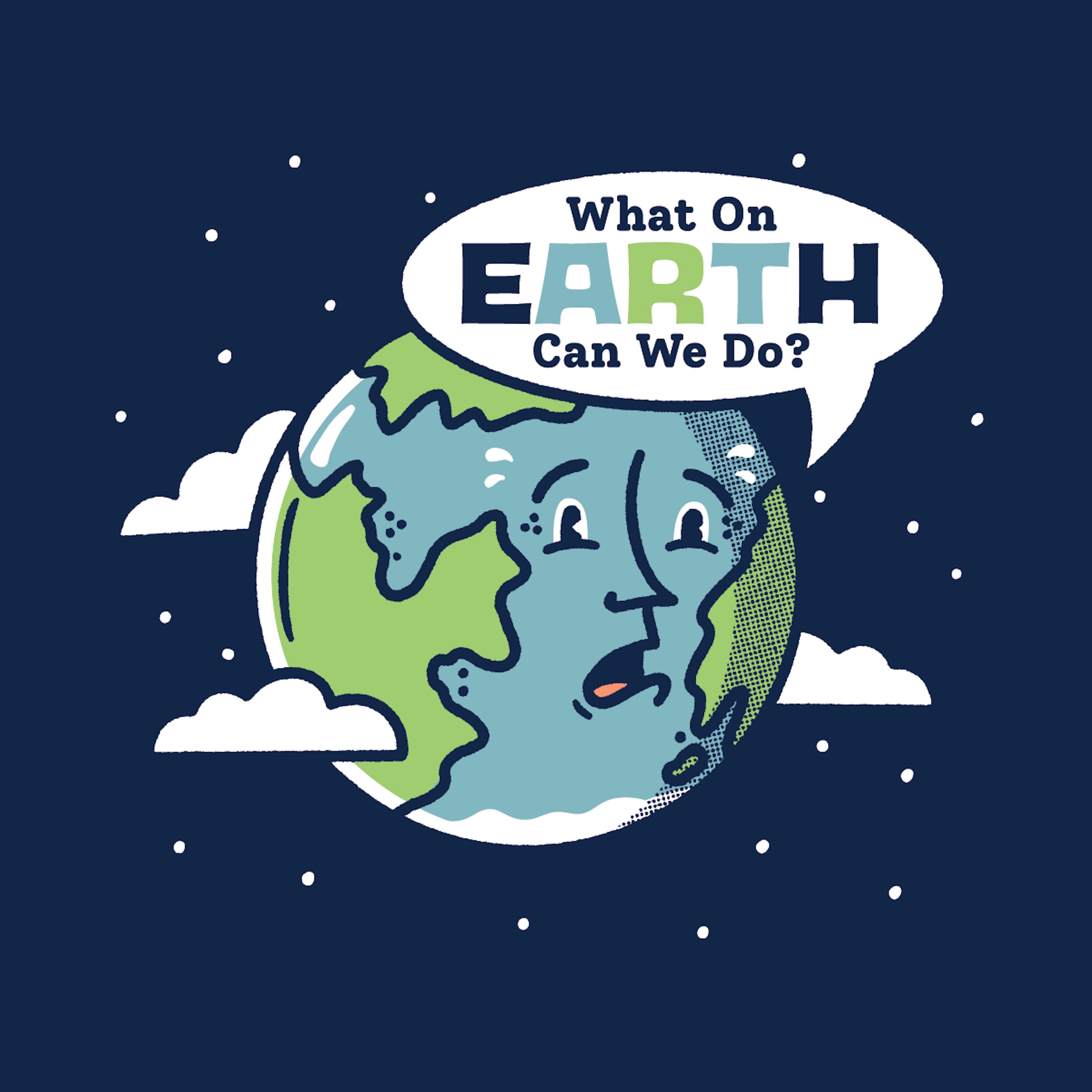Episode 3
Can Small Businesses Help Solve Alberta’s Food Waste Problem?
When we talk about food waste, most of us picture what ends up in our own kitchen bins — but there’s a whole other side to the story. Across Alberta, small businesses like cafés, restaurants, and grocery stores face big challenges when it comes to keeping food out of the landfill.
In this episode, Bri speaks with Maggie Bain, Project Manager of the ICI Food Waste Diversion Initiative at the Circular Innovation Council, about a pilot program in Strathcona County and Westlock that’s helping small businesses keep food out of landfills.
Together, they unpack how the project worked, what made it successful, and the impact it’s already having — from reducing methane emissions to inspiring long-term change in local communities.
Listen to learn:
- Why it’s so hard (and costly) for small businesses to divert food waste
- How collaboration between local governments, haulers, and processors made it possible
- The impressive results — including nearly 90,000 kg of organics diverted
- What this means for Alberta’s circular economy and the future of food waste solutions
Learn more about The Circular Innovation Council’s Commercial Waste Diversion Pilot
The What On EARTH Can We Do? podcast is a program of the Alberta Emerald Foundation (AEF), a registered charity dedicated to accelerating environmental excellence across Alberta.
Thank You to Our Sponsors:
Capital Power, Government of Alberta, the Forest Resource Improvement Association of Alberta, Pathways Alliance, City of Edmonton, TD Friends of the Environment, and City of Calgary
Disclaimer:
The views and opinions expressed by our guests do not necessarily reflect those of the Alberta Emerald Foundation. As a non-partisan organization, we are committed to presenting diverse perspectives on environmental issues.
Transcript
The project is led by the Circular Innovation Council and tackles a lesser known problem, how expensive and complicated it can be for small businesses to compost or divert food waste. Joining me today is Maggie Bain, project manager of the ICI Food Waste Diversion Initiative at the Circular Innovation Council.
Maggie's here to walk us through what the problem looks like on the ground, how the pilot worked, and the real impact it's having for both businesses and the environment.
Hey Maggie. Thanks so much for joining us on the podcast today.
Maggie: Yeah, no problem. Thank you for having me. Happy to be here.
ink about food waste as what [:Maggie: Yeah, that's a really good question.
So, yeah, like you said, I think most people think about, uh, household food waste, um, since that's kind of all what we're living and breathing every day, but , you know, uh, the ICNI sector, which is the industrial commercial institutional sector in Canada, is everything that's essentially non-residential, or non-household food waste.
, And so a lot of, um, both large and small businesses, are food generators and therefore, , food waste generators or organic material generators. And so, you know, that can be anywhere from, further kind of up the, up the food chain, like, um, like processors or manufacturers of food products, even like transportation companies and wholesale companies.
out to, , what we're mainly [:Um, so that's also where a lot of the food waste gets, produced, uh, just by default of the nature of the businesses. And, you know, being able to provide them, proper food waste reduction and food waste diversion solutions is really, really important because they make up, um, you know, a huge portion of these materials that end up in landfill, where there is, you know, incredible resource recovery opportunity and food redistribution opportunity within our communities that, you know, can bolster, you know, community wellness, as well as like, you know, economic wellness.
tail side of the businesses, [:Maggie: Completely depends on the, um, establishment itself.
So, like you said, restaurants and cafes, uh, actually, especially since COVID, since, across Canada, kind of margins have been kept a little tighter. When it comes to inventory ordering, we find that they don't have a ton of like back of the house food waste. And by that I mean, what's like produced in.
Cooked in the kitchen, uh, extra ingredients, things like that. , A lot of it comes from like plate scrapings, um, front of house from customers. Um, so, uh, that's kind of what's they're dealing with. Uh, coffee shops in particular, cafes, produce a lot of coffee grounds, which some places give away for free as like fertilizer, , to customers.
laces like grocery retail. A [:And so they need to get it off the shelves into something useful quickly. When it comes to the more like food scraps, especially in larger places like grocery, retail. Kind of varies by store, so some of the larger, um, places can more readily afford something like, uh, curbside organic waste diversion, or collections.
Um, but some of the smaller guys kind of struggle, to be able to meet that cost. And so those are the ones, a lot of the ones that are looking for those solutions. Not to the fault of really anyone involved in the entire system. It's just the cost of the system and that they're small and that, uh, the system's a little bit fragmented.
And so, [:Bri: Yeah. So sounds like there's, there are ways for these small businesses, retail facing businesses to, to tackle food waste. Whether that's through, um, giving food to, to places like Second Harvest, um, loop Resource, a lot of these different options that you, that you mentioned.
Um, and then, you know, also composting, uh, is, is an option for them, but it sounds like that's kind of expensive, maybe prohibitive for certain businesses. So, uh, the Circular Innovation Council launched a pilot program in Strathcona County to help address and fix this issue. So can you walk us through this program and a little bit about how it works?
Maggie: So, uh, back in:With the idea that, uh, you know, there are waste haulers readily available in the area. And by that I mean the people collecting or the organic curbside, uh, waste, as well as a couple like larger local processors, to be able to turn those materials into valuable products like compost and fertilizer and soil amendment.
And so, you know, there was, there's a good market locally for it, in the area around Edmonton and Strathcona County in Westlock. So. Essentially we received funding as, uh, CIC as a nonprofit, to go in and launch this program in partnership with all of these players in the space. So, you know, we are all kind of collaboratively, uh, talked and helped co-design it before launching it.
Westlock staff and the, uh, [:The idea was that we want to. Help businesses be able to both like logistically and financially and like, education and like support wise, be able to access a system for their food scraps and diverting them out of landfill.
Which in the case of this program was like the curbside carts for organics collection that go to the, um, compost processor. As well as, uh, give them an option for food surplus, food diversion if they're not already don donating to the local food bank. And so we wanted to come in and kind of, I guess similar to door-to-door collection, for like your household, um, kind of duplicate that model and
e bit lower than what you'd, [:Um, and so a lot of the. Cost of organics collection is actually the transportation for the truck driver. Um, going to collect the curbside organics. And this is, you know, because, uh, of the fuel through the truck and the driver's hours, uh, itself. And so, the more we can kind of make that route
efficient and not so fragmented and piecemeal. Like, you know, there's this restaurant over in this end and they're driving 20 minutes out to them, and then they have to like turn around and double back and go 15 minutes the other way. It's much easier to, you know, try and create a densified route for them.
ting institutional organics, [:When it came to small and, and medium sized businesses locally.
Bri: So in our first two episodes, we spoke with Dr. Kate Parizeau about the scale of this challenge of food waste and food loss across Canada. You know, we're talking about Alberta right now, but working with these different organizations that you're speaking about, I assume, you know, it's not making a, a huge giant dent, but it's, it's making a dent within Strathcona County and with within Westlock and also creating that culture of change.
And so how long was this pilot project? Is it still going on or has it, has it ended?
s, um, we ran it from June of:Um, you know, we [00:10:00] didn't just wanna like cut off the service and it goes away , 'cause that's what happens with a lot of pilot projects. So it wa we intentionally, we were trying to build out partnerships with the local municipalities and organizations to see if there was someone locally who would be able to take it on and turn it into something longer term.
Um, so, uh, for Strathcona County , the municipality there actually was really invested in the project. Um, I think, uh, from an enthusiasm standpoint as well as, you know, enjoying that they were able to, to help their local ICI community and get some of that food at a landfill. And so they ended up at the end of the project taking over operations from us.
nths at first, so till, June,:You know, [00:11:00] kind of just ask for a yes no on being able to trial it for another year and see how it goes. So it is still currently in operation, which is really cool. It's turned into this longer term solution in the community that hopefully will eventually evolve into something larger. Okay.
Bri: That's great to hear.
I'm glad that it's been extended for a little bit longer. Yeah. And hopefully it becomes a permanent place within Strathcona County and, and Westlock. And you spoke about the impacts. Maybe we can chat about that a little bit. So what have the impacts been so far, both for the businesses involved, maybe economically as well as the environment?
ntarily then it can be quite [:, And so it provided them like a financial in a little bit better than if they were to go try and procure that service privately.
Mm-hmm. And, uh, so because that cost was dropped a little bit, it just makes it. More feasible overall, especially for small and medium sized businesses to just get their foot in the door. Um, we weren't tying them to like a huge, like, long service contract or anything. So one of the good parts of, um, these projects is it's very flexible for the participants that are on it in that they can kind of opt in, opt out if they need to during the program.
other locations sometimes the[:essentially if that food was going anywhere in the first place, it was going in your garbage. And so by dropping the volume of food waste in their, especially dumpster size, you know, garbage containers, sometimes they're able to, uh, reduce their frequency of pickup, which, you know, saves them a bit of money, um, that might even be able to, uh, reduce the size of the container, which also saves the money.
Um, so there's that kind of like right sizing as they're moving through the process. Option as well. So, you know, for some of the, the larger volumes getting reduced, that's, that happens along the way too, which is cool. And then impact-wise, environmentally, um, you know, like I mentioned at the beginning the importance of getting these organic materials out of landfill, not just because they're taking up landfill capacity and stressing the landfills.
economic part, i'm sure Kate [:And it has, uh, something like 8 86 times the warming potential, um, within 25 years than CO2 does. So it's this shorter term, greenhouse gas that doesn't stay in our atmosphere for as long, but it's, it's warming potential is just so potent that it's, it's really imperative that we get it out of the landfills.
Bri: Can you quantify what the environmental impacts were and maybe make them approachable for the, the everyday Albertan or Canadian listening?
, when those businesses in a [:organics processing, or there's a little bit of food rescue in there as well. Um, and for scale, this is about the weight of 15 elephants. So that's a lot. It's a lot of elephants. Uh, it's pretty weighty. Um, and you know, this was just a handful of businesses in, um, you know, a couple smaller towns. So you can imagine the, I guess people could imagine the scale of it, um, you know, taken up from that.
craps being diverted is about:And, you know, on an energy scale the equivalent of 3000 tons of those emissions is about the same amount that's used for the energy of about 700 homes for one year. So there it is. It, it has a decent scale. I know it has kind of like a small impact on the scale of how many businesses and, food waste diversion potential there is out there.
Mm-hmm. But even locally, it was creating a dent.
Bri: Yeah, absolutely. And if you think about, uh, you know, this is 15 businesses, if we can have even double that, if we have, create this as a part of the culture in a way that we do business. Yeah. Uh, the, the possibility for impact is, is, is pretty large.
Maggie: I know it is.
e can do there and hopefully [:Bri: Well, it's so amazing to hear that, you know, this, this pilot project within in Strathcona County and Westlock went so well. It's being extended through, through the support of council and things like that, that the program is being extended to the city of Edmonton,
and it's, it's projects, pilot projects like this that give me a lot of hope when it comes to tackling food waste, not just in Alberta, but across the country because like. We talked about in our conversation with Dr. Kate Parizeau in the first two episodes. It's a huge issue and we really need to work on solving it.
Uh, and there's so many people across, across the province and across Canada who are working to do that, which, you know, we, we've heard about today in this episode, and we'll continue to hear in the episodes following this one. So, I'm so appreciative for you coming on the show and, uh, and talking about this.
Thank you so much for being here.
on initiatives are happening [:Bri: Thanks so much to Maggie for joining us and showing us what's possible when small businesses, local governments, and the circular economy come together. If you're curious about how this program worked or want to learn more, check out the show notes for links and resources.
And if you liked this episode, consider sharing it with a small business owner in your life. The What on Earth can We Do? Podcast is a program of the Alberta Emerald Foundation, a registered charity focused on accelerating environmental excellence across Alberta. To learn more about the Alberta Emerald Foundation, head to our website, emerald foundation.ca, or follow us on social media at Alberta emerald. A big thank you to our sponsors who make this podcast possible. The Government of Alberta, the Forest Resource Improvement Association of Alberta. Pathways Alliance, the City of Edmonton, the city of Calgary, and the TD Friends of the Environment Foundation. See you next time.


